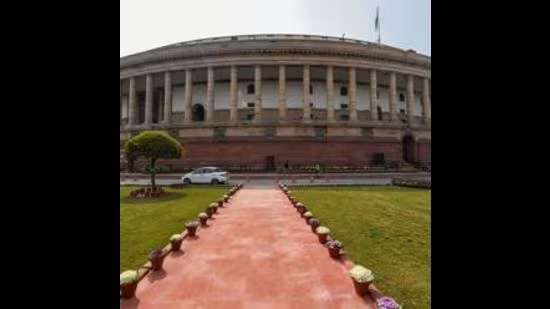Who can quarrel with free washing machines, except to point out that it reiterates a belief in what male-dominated parties hold to be woman’s true place? Someone should tell them, it’s not behind the spin cycle. It’s in the House. And it’s time women voters delivered that message.

The demand for 33% reservation of seats in the assemblies and in Parliament gets a great deal of lip service in party manifestos. This humbug is both tired and dated. When we are half the population, why settle for anything less in the legislature? (PTI)
Travel concessions for women, a salary for “housewives”, LPG cylinders, government job reservations, even free washing machines. Doesn’t take a genius to spot the signs of an election at a time when women voters can no longer be ignored.
And yet, despite the sops, one fact remains impossibly hard to dislodge — the low number of women contestants.
Of the 291 candidates fielded by Mamata Banerjee’s Trinamool Congress, 50 are women. That’s an unprecedented 17% women contesting — lower than the 41% the party had put up for the 2019 general elections — but leagues ahead of Kerala, where just 9% of candidates are women, resulting in Kerala Mahila Congress chief Lathika Subash’s protest tonsure. The Communist Party of India (Marxist) has 12 women candidates out of 85; the Bharatiya Janata Party (BJP) 15 out of 115.
In Tamil Nadu, only 14 of the 171 candidates announced so far by the AIADMK and 12 of the 173 by the DMK are women. In Assam, 19 of 223 candidates announced (as of March 8) are women.
This, by any yardstick, is pathetic.
Calling it a “travesty of democracy”, Tara Krishnaswamy, co-founder of Shakti, an organisation aimed at increasing women’s political representation, said that states that do well on gender indices, Kerala and Tamil Nadu, for instance, have historically been stingy when it comes to putting up women candidates. “Parties committed to social justice have been extremely patriarchal in their set-up. Investing in women’s leadership is seen as a threat to male power.”
The demand for 33% reservation of seats in the assemblies and in Parliament gets a great deal of lip service in party manifestos. This humbug is both tired and dated. When we are half the population, why settle for anything less in the legislature? The issue is representation. Men cannot continue to decide on policies that affect women, whether it’s a revamped abortion bill, passed this week, or changes in the juvenile justice law.
But more than representation, there is also women’s right to occupy space.
When we think of public spaces, we tend to restrict our imaginations to parks, streets and public transport. But public space also includes Parliament and assemblies. It includes the higher judiciary, labour force, higher education, the corner office, sport.
In each of these spaces, women are missing. The recent retirement of Justice Indu Malhotra leaves just one woman judge in the Supreme Court and fewer than 6% women judges in the higher judiciary.
The question of who owns public spaces gains urgency at a time when the pandemic has pushed women indoors, with disastrous consequences — a spike in domestic violence, girls being pulled out of schools, a surge in child marriage and an even more precipitous drop in labour force participation.
Who can quarrel with free washing machines, except to point out that it reiterates a belief in what male-dominated parties hold to be woman’s true place? Someone should tell them, it’s not behind the spin cycle. It’s in the House. And it’s time women voters delivered that message.
Namita Bhandare writes on gender
The views expressed are personal